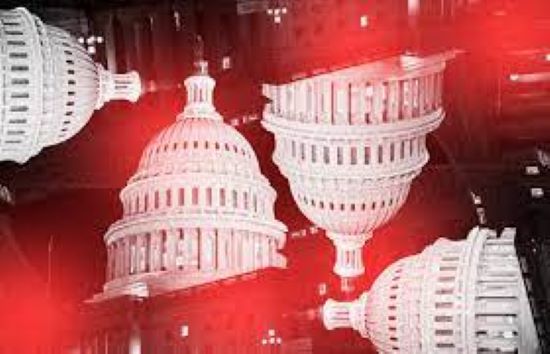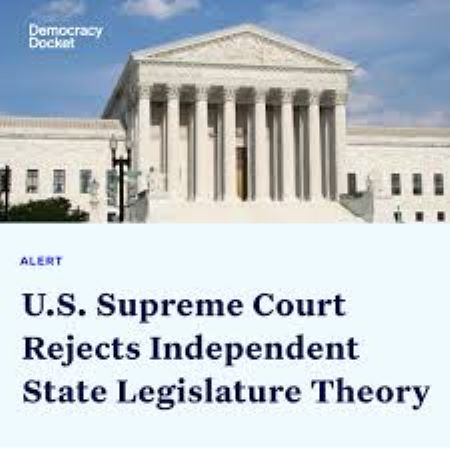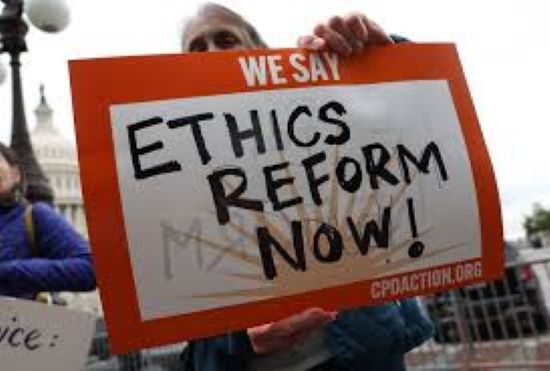|
The “Concord Hymn” by Ralph Waldo Emerson was written for the dedication of the Battle Monument on July 4, 1837 in Concord, Massachusetts. It commemorated the Battle of Concord which took place at the North Bridge at the outbreak of the American Revolution. By the rude bridge that arched the flood, Their flag to April’s breeze unfurled, Here once the embattled farmers stood And fired the shot heard round the world. The foe long since in silence slept; Alike the conqueror silent sleeps; And Time the ruined bridge has swept Down the dark stream which seaward creeps. On this green bank, by this soft stream, We set today a votive stone; That memory may their deed redeem, When, like our sires, our sons are gone. Spirit, that made those heroes dare To die, and leave their children free, Bid Time and Nature gently spare The shaft we raise to them and thee. While visiting relatives in New England last month I had the opportunity to spend time in the towns of Concord and Lexington in Massachusetts. These towns witnessed the opening salvos of the Revolutionary War nearly 250 years ago. On the morning of April 19, 1775 hundreds of British soldiers left Boston and marched toward Concord to capture and destroy stockpiles of gunpowder and military supplies stored by the local militia. Along the way the British soldiers confronted seventy-seven militia men waiting for them on Lexington Green. No one is sure who fired the first shot, but within minutes eight colonial militia men were killed and several more were wounded. The British suffered only one minor casualty and soon resumed their march to Concord. Once in Concord, British soldiers searched homes and barns for military supplies, and burned all that they found. Thinking that the soldiers had set their town on fire, the local militia confronted the British soldiers at the North Bridge. The soldiers fired upon the militia, killing two men and injuring several more. A militia officer ordered his men to return fire and two British soldiers were killed. This was an act of treason against the British government and the spark that ignited the American Revolutionary War. At the Minute Man National Historical Park I joined a guided walk along the Battle Road Trail, part of the colonial Bay Road where several battles and skirmishes took place on that fateful day in 1775. As we walked along the woodland path lined with maple, oak and beech trees alight in their colorful autumn splendor, it has hard to imagine the enormity of the events that had taken place here. But a black cloud hung over New England that day, as was the case on April 19, 1775. The news of a horrific mass shooting in Lewiston, Maine the previous night was being reported, and the details of the carnage were being updated throughout the day. An Army reservist with a history of mental illness had killed eighteen people and wounded thirteen others using an AR-10 assault rifle. Walking along Battle Road that day, I couldn’t stop thinking about the senseless slaughter of innocent people that took place the previous night. Sometime later I came to the realization that the mass shooting in Maine was somehow rooted in the events that took place in Concord in 1775. The local militias in Concord, Lexington, and surrounding communities had effectively repelled professional soldiers of an overseas king. There was no going back. Colonial Militias: In colonial times a militia represented a military force raised from the civilian population, for the common defense of the community. Militias were distinct from professional soldiers, and were generally organized around towns, regions, or colonies. Members of Massachusetts militias were required to possess and be skilled in the use of a musket, powder, and shot. Local militia units from all of the thirteen original colonies were the backbone of George Washington’s army during the Revolutionary War. The “Militia Act of 1792” stipulated that the militia would consist of each and every able-bodied white male citizen of the respective States, who is at least 18 years of age and under the age of 45. At the start of our new republic, the founding fathers feared that a standing army could be used to suppress the liberties of the citizens, and therefore opposed the formation of one. But they needed to provide for the common defense, and saw the state and local militias as a necessary compromise. It should therefore be no surprise that armed militias were enshrined in the U.S. Constitution. Second Amendment: The 2nd Amendment to the Constitution was adopted in 1791. It states “A well regulated Militia, being necessary to the security of a free State, the right of the people to keep and bear Arms, shall not be infringed”. A lot has changed in the United States since the Second Amendment was adopted. The traditional concept of a civilian based militia no longer exists, and state-based militia organizations have been incorporated into the federal military structure. You can find more information on the history of militias in the United States in one of my previous blog posts. Repeal or Replace the 2nd Amendment: If I was king for a day, I would do away with the 2nd Amendment. That is not to say that I would abolish all access to guns by law abiding citizens. There are legitimate reasons, such as sport and personal protection, for citizens to have access to certain types of guns. But I am convinced that meaningful gun control legislation cannot happen in this country without repealing or replacing the 2nd Amendment. The 2nd Amendment is why we have metal detectors and security guards in schools. It is why mass shootings are common place, and citizens are allowed to parade around openly carrying military style assault weapons. The 2nd Amendment justifies use of military grade armaments and tactics by law enforcement. The 2nd Amendment has given rise to the NRA and other pro-gun lobbies which have corrupted our political system. The 2nd Amendment has had a damaging impact on modern American society. Short of amending the Constitution, guns are here to stay. Fortunately, even the most conservative courts acknowledge that gun regulation does not violate the Second Amendment. Even without amending the Constitution there are some common-sense things that Congress can do. Common Sense Gun Reform Measures: (For more detail on these gun reforms refer to Part 4 of my blog series, Guns in America.
The violent manner in which this country was founded has repercussions to this very day. The events at Concord and Lexington on April 19, 1775 cemented the use of fire arms by the civilian population in America. The 2nd Amendment enshrines it in our Constitution, and our conservative Supreme Court will see to it that this doesn’t change anytime soon. Approximately 42% of American households own at least one gun, and there are reportedly more guns in this country than there are people. Clearly gun ownership is a cultural issue, and it takes a lot of time to change cultural norms. But gun regulation is not a cultural issue. It is a legal and political issue, which can be influenced by the courage and will of the people. No matter where you stand on the gun control issue, I think we can all agree that something needs to be done to reduce gun violence in America. For the sake of the grieving families in Lewiston, Maine, let’s hold Congress accountable for not taking action on meaningful gun reform. If you enjoy reading this type of commentary please subscribe to my blog and tell a friend. You will receive an email notification when new blogs are posted. The email will come from the site’s email: [email protected].
Thanks, Armchair American
1 Comment
Halloween is right around the corner, and the biggest horror show in the land is playing out in the House of Representatives. The nightmare became palpable when Rep. Jim Jordan of Ohio was selected by House Republicans to become their nominee for speaker. Fortunately, some moderate Republicans found the moral courage to send Jordan packing by refusing to back him on Friday. The House has now been without a speaker for nearly three weeks. My last blog detailed the ouster of Speaker Kevin McCarthy after Rep. Matt Gaetz initiated a motion to vacate the chair. If Mr. Gaetz’s intention was to create chaos in the House, he certainly succeeded. But there is hope that cooler heads will prevail in Congress and a more reasonable group of moderate Republicans will step forward and push the far-right members of the Republican caucus to the sidelines, where they belong. The rejection of Jim Jordan by several Republican members, is a repudiation of one of the House’s most extreme and unqualified members to replace McCarthy. Here are some of the reasons why Jim Jordan was a terrible choice to become Speaker of the House of Representatives: Support for Donald Trump’s Efforts to Overturn the 2020 Election: According to the January 6th committee's final report, Jim Jordan was a significant player in the efforts by Donald Trump to overturn the election results after his defeat. The report states that “He participated in numerous post-election meetings in which senior White-House officials, Rudolph Giuliani, and others, discussed strategies for challenging the election, chief among them, claims that the election had been tainted by fraud.” On January 2, 2021, Jordan led a conference call in which he, President Trump and others discussed strategies for delaying the January 6th joint Session of Congress to certify the vote. During that same call the group discussed methods to encourage Trump’s supporters to march on the Capitol on January 6th. Jim Jordan also communicated with White House Chief of Staff Mark Meadows on ways Vice President Mike Pence could refuse to count electoral votes that they deemed to be unconstitutional. Jordan was one of 147 House Republicans who voted to overturn the election. He also signed on to an unsuccessful lawsuit filed at the Supreme Court to get electoral college votes thrown out in several key states. For his unwavering loyalty, President Trump awarded Jim Jordan the Presidential Medal of Freedom. Jim Jordan’s continued refusal to admit to his Congressional colleagues that Donald Trump had lost the election pushed away many of the moderates. Without the support of moderate Republicans in the House, Jordan couldn’t become speaker. Refusal to Comply with Congressional Subpoena: The January 6th committee issued Jordan a subpoena, compelling him to testify before their committee. He refused, proving that he won’t follow House rules that he disagrees with. Is that the kind of leader House Republicans want? Fortunately, several were clear-eyed enough to say no. Jordan was referred to the House Ethics Committee for failure to comply with the subpoena. It is not a surprise that no action was taken against him. Jordan Hasn’t Earned the Right to Become Speaker: Quite simply, Jordan hasn’t paid his dues. Most House members who became Speaker spent years building relationships with colleagues, supporting colleagues through fund raising, and backing legislation. Jordan has done none of that. He hasn’t pushed through any significant piece of legislation or done much of anything positive during his time in Congress. According to Vanderbilt University’s Center for Effective Lawmaking, Jordan consistently ranks among Congress’ least effective members. He was ranked 217th out of 222 House Republicans in the last Congress. Jim Jordan is known as an antagonist in his own party. He played a central role in several government shutdowns in 2013, 2015, and 2018, and is not averse to using the threat of government shutdowns or debt ceiling defaults to push his extreme right-wing agenda. Other Things to Know About Jim Jordan:
In the House of Representatives, we are witnessing what happens when individual members put their own interests above that of the institution. If they don’t get their own way, they create chaos, and damage the reputation of the institution. This results in the citizenry losing faith in government institutions.
With seven Republican candidates vying for the House speakership, we are in for another long and momentous week in Congress. If one of the candidates can’t make it across the finish line, the next best option may be to temporarily expand the powers of Speaker Pro Tempore Patrick McHenry. This at least would allow some critical pieces of legislation to reach the floor of the House. I know that McHenry is not very popular with the hard-right within the House due to his close ties to Kevin McCarthy. But this is far more acceptable to most Republicans than to reach a handshake deal with the Democrats in order to reopen the House. Update: 10-24-2023. Rep. Mike Johnson of Louisiana was elected Speaker of the House of Representatives. Johnson is a MAGA Republican and was a promoter of the false claim that the 2020 election was stolen. Donald Trump and Matt Gaetz are thrilled with the selection of Johnson. There is much to do in Congress and the next few weeks will demonstrate Mike Johnson’s true colors. His most crucial test will be keeping the government running after the current government spending bill expires on November 17, 2023. If you enjoy reading this type of commentary please subscribe to my blog and tell a friend. You will receive an email notification when new blogs are posted. The email will come from the site’s email: armchairamerican1776 @gmail.com. Thanks, Armchair American “The office of Speaker of the House of the United States House of Representatives is hereby declared vacant”, said presiding officer Representative Steve Womack, after the historic vote on October 3, 2023. Kevin McCarthy’s speakership ended after just nine months following the 216-210 vote, making him the first speaker in history to lose his job by being voted out by his own party. Immediately after the gavel came down on McCarthy’s speakership, the House Clerk announced that Representative Patrick McHenry would act as the temporary speaker (speaker pro tempore) until a new speaker was selected. In his first act, McHenry put the House of Representatives into recess, throwing it into confusion and chaos, effectively closing down one third of the Federal Government. So how did we get to this sorry state of affairs, and what are the implications for the Republican Party and for the United States? What Led to McCarthy’s Downfall? Kevin McCarthy’s speakership was doomed from the start. It took fifteen rounds of voting over four days to secure enough votes to be elected last January. Most of the twenty or so Republicans who opposed McCarthy were members of the House Freedom Caucus, a group opposed to compromise, particularly with Democrats. McCarthy’s chief nemesis, Representative Matt Gaetz of Florida, supports the views of the House Freedom Caucus and generally votes with them. McCarthy made several concessions to secure enough votes to become speaker. But the concession that sealed his fate involved rule changes to the “motion to vacate the chair”, a procedure House members can use to remove the speaker. Previously a majority of House Republicans were needed to call for such a motion. Under the new rules, any single member of the House could now call for a motion to vacate the chair and force a vote. Only a simple majority of the votes cast would be needed to remove the speaker. Matt Gaetz called for a motion to vacate the speaker’s chair on October 2nd. The following day the House voted to remove McCarthy. The House Democrats unanimously voted against McCarthy, as did eight Republican hardliners, most of whom originally opposed McCarthy’s speakership. Why Did House Republicans Fire McCarthy? The vast majority of House Republicans (210) voted to keep McCarthy as their speaker. What did McCarthy do that was so egregious that eight members of his own party would vote to remove him from leadership and throw the House into chaos? He worked with Democrats to reach compromises in order to maintain a functioning government. There were two things in particular that Matt Gaetz and some members of the House Freedom Caucus couldn’t stomach. The first was the deal that McCarthy negotiated with President Biden in June to lift the debt ceiling, resulting in the Fiscal Responsibility Act of 2023. But the straw that broke the camel’s back was McCarthy’s recent deal struck with House Democrats to pass a short term spending bill to avert a government shutdown. The spending bill lacked the deep spending cuts and new border policies demanded by the conservatives in the House. A small number of House Republicans were ready to shut down the government in order to get their way. McCarthy did the right thing by standing up to them. Here is what Kevin McCarthy said in his own defense: “I don’t regret standing up for choosing government over grievance. It is my responsibility. It is my job. I do not regret negotiating. Our government is designed to find compromise. I don’t regret my efforts to build coalitions and find solutions.” Why Did Democrats Choose Not to Support McCarthy? If just three House Democrats voted in support of Kevin McCarthy, he would still be Speaker of the House. So why didn’t they? According to House Minority Leader Hakeem Jeffries, it was not the Democrats’ job to rescue McCarthy, who they viewed as untrustworthy. Here are some of the other reasons given by Jeffries:
The House Democrats couldn’t miss the opportunity to capitalize on the political vulnerability that the House Republicans had created for themselves. Democrat Congresswoman Pramila Jayapal put it this way: “Let them wallow in their pigsty of incompetence.” Damage to the Republican Brand: The majority of House Republicans who supported Speaker McCarthy are not happy with what they view as a self-inflicted wound. Matt Gaetz who led the charge on ousting McCarthy, had no plan on what was to come next. With no clear path forward, the House Republicans look incompetent, dysfunctional, and lacking in the unity and ability to govern. This dysfunction does more than just damage the Republican brand, it further erodes confidence in our government at home and abroad. What’s Next? Until a new speaker is elected, no House business can be conducted. The start of a new war in Israel and the temporary spending bill that expires on November 17th demand immediate attention by our House of Representatives. Let’s hope that the House elects a speaker soon, before any more damage can be done to one of our great institutions, and to the credibility of our government. In order to restore credibility, the House Republicans must come together and act like a unified party. The adults in their caucus must understand that compromise and reaching across the aisle are essential to governing in a democracy. Even if they could ram partisan legislation through the House, how do they expect to get it passed in the Democrat led Senate, and signed by a Democratic president? At the very least, House Republicans must change the rules on the “motion to vacate”, and require a majority of members, not just one, to initiate the process. No speaker should ever again be held hostage by a few malcontents in their caucus. Kevin McCarthy’s ambition to become Speaker of the House knew no bounds. He risked his reputation and the prestige of the U.S. House of Representatives to fulfill that ambition. He made a deal with the devil to reach the leadership position, and should not have been surprised that he got burned in the end. Mr. Gaetz, now that you have ousted the speaker, what are your plans? To stay in the headlines and on cable T.V. of course.Post Scrip: On late Friday afternoon (10-13-2023) House Republicans selected Representative Jim Jordan of Ohio as their nominee for speaker. At this time Jordan does not have the support of enough House Republicans to secure the speakership. House members have left Washington D.C. for the weekend, so the drama will drag out well into next week.
If you enjoy reading this type of commentary please subscribe to my blog and tell a friend. You will receive an email notification when new blogs are posted. The email will come from the site’s email: armchairamerican1776 @gmail.com. Thanks, Armchair American Earlier this month Speaker of the House Kevin McCarthy directed the House of Representatives to open a formal impeachment inquiry into President Joe Biden. According to McCarthy, “House Republicans have uncovered serious and credible allegations into President Biden’s conduct. Taken together, these allegations paint a picture of a culture of corruption”. These are serious allegations. Is there any truth to them, or just the actions of a group of House Republicans attempting to damage the President in the runup to the 2024 presidential election? Let’s examine the allegations and the implications for President Biden. Does Donald Trump factor into any of this, and what are Kevin McCarthy’s true motivations behind his impeachment inquiry into Biden? The Allegations: During a September 12, 2023 news conference Speaker McCarthy outlined the following charges against President Biden:
A Little Background: The President’s son Hunter has gone through a much-publicized period of his life addicted to alcohol and crack cocaine. Hunter is currently in recovery and we wish him well. Let’s just say that Hunter was not a model citizen during this period of his life. Hunter Biden has been under investigation by the U.S. attorney’s office in Delaware since 2018, looking into his foreign business dealings, amongst other things. The investigation uncovered the fact that Hunter failed to pay taxes on approximately $1.5 million in undeclared income he earned from his foreign business activities. He subsequently paid the income taxes and penalties, and in June of this year plead guilty to two misdemeanor tax charges. The U.S attorney’s investigation also discovered that Hunter had made false statements on an application to purchase a firearm, and illegally purchased a firearm while addicted to drugs. These gun charges have led to Hunter being indicted on three felony counts earlier this month. President Biden loves his son and is very protective of him. The Republicans know this, and the cynic in me believes that they sense that the President is vulnerable because of this relationship and will try to exploit it. In other words, they are attempting to damage Joe Biden through the dealings of his troubled son. Basis for the Allegations Against Joe Biden: Hunter Biden’s business dealings in Ukraine and China have been extensively reported on over the past few years. Hunter details his foreign business deals in his 2022 book “Beautiful Things, A Memoir”. Hunter Biden also provided information about his foreign business dealings in court testimony during his trial for tax evasion. This information is not new, but more importantly, there has never been any proof that Hunter Biden’s activities or those of other Biden family members were linked to Joe Biden. For several months the House Oversight Committee has been conducting an investigation into Hunter Biden’s foreign business activities. The Committee is also looking into the financial and business dealings of other Biden family members. The Committee’s intent is “to determine whether these activities compromise U.S. national security and President Biden’s ability to lead with impartiality.” The witness testimony during the Congressional investigation didn’t provide any direct link between President Biden and his son’s business activities, but it nonetheless formed the basis of Speaker McCarthy’s impeachment inquiry. Where is the Crime? Let’s look at the allegations one at a time.
Impeachment as a Political Weapon: The allegations against President Biden seem pretty thin, but that’s beside the point. A handful of House Republicans on the extreme-right had vowed to impeach President Biden as soon they took over leadership of the House of Representatives. Kevin McCarthy is beholden to these hard-liners for voting him in as Speaker. In order for McCarthy to move ahead with his agenda, not the least of which is a spending bill to fund the government, he must appease his right wing. More importantly, if McCarthy had not moved ahead with the impeachment inquiry there was a real possibility that he would lose his speakership. The extreme right within the Republican Party has pledged its fealty to Donald Trump, not to Kevin McCarthy. It has been reported that Donald Trump has privately discussed the impeachment of Joe Biden with House Republicans. In a recent interview with Megyn Kelly, Donald Trump suggested that the impeachment inquiry is payback for the Democrats impeaching him twice. “They did it to me,” Trump told Megyn Kelly during an hourlong interview on SiriusXM radio. “And had they not done it to me, I think, and nobody officially said this, but I think had they not done it to me … perhaps you wouldn’t have it being done to them.” During several campaign rallies this summer Trump has been pushing for the impeachment of Joe Biden, and has threatened Republicans by stating that “Republicans in Congress that don’t act on Biden, they should be immediately primaried and get out”. Donald Trump is out for revenge and he has plenty of loyal foot soldiers to do his bidding. Impact on Joe Biden: There is slim possibility that the House of Representatives will vote to impeach President Biden. Even if they did, he would not be convicted in the Democrat controlled Senate. Nonetheless, House Republicans have succeeded in appeasing Donald Trump, creating a distraction for President Biden, and may even have convinced some voters that he is guilty by association with his son’s sketchy foreign activities. The 2024 presidential election is going to be close, and one more vulnerability for Joe Biden, no matter how small or inaccurate, doesn’t bode well. It creates more grey clouds over his campaign in what is already gearing up to be a stormy election. Hunter Biden benefitted handsomely off his famous last name. This may be unseemly, but it is not illegal. Joe Biden has no one to blame but himself for his current predicament. Yes, the House Republicans are acting shamelessly, but that’s politics. Biden should have stifled his son’s ambitions about becoming an international business and political consultant before it started. Joe Biden has too much political experience, as well as intimate knowledge of his son’s weaknesses, not to have kept Hunter on a tight leash. President Biden is not guilty of the allegations leveled against him by Speaker McCarthy. But he is guilty of letting the love for his son cloud his better judgment. If you enjoy reading this type of commentary please subscribe to my blog and tell a friend. You will receive an email notification when new blogs are posted. The email will come from the site’s email: armchairamerican1776 @gmail.com.
Thanks, Armchair American September 25, 2023 In the aftermath of the January 6, 2021 attack on the U.S. Capitol, there has been a lot of speculation that Donald Trump’s involvement would disqualify him from ever holding public office again. The legal justification for disqualification is spelled out in Section 3 of the Fourteenth Amendment to the U.S. Constitution. The first legal action to test whether or not Donald Trump can be disqualified under the Fourteenth Amendment took place in a Colorado District Court last week. The nonprofit group Citizens for Responsibility and Ethics in Washington, on behalf of six Colorado voters, filed a lawsuit against Colorado Secretary of State Jena Griswold. The lawsuit was filed to prevent Donald Trump from appearing on Colorado’s Republican presidential primary election ballot and any future election ballot based on his disqualification to hold public office under Section 3 of the Fourteenth Amendment. The lawsuit also seeks to prevent Colorado’s Secretary of State from taking any action that would allow Donald Trump to appear on the ballot. Does the lawsuit in Colorado have any merit, and will it prevent Donald Trump from appearing on the Republican primary ballot? Before we can answer these questions let’s first exam Section 3 of the Fourteenth Amendment to see if it has any application to Donald Trump and the 2024 Presidential election. Section 3 of the Fourteenth Amendment: It was adopted in 1868 in the aftermath of the Civil War to prevent military officers, federal officers, and state officials who served in the Confederacy from holding any future public office. Sometimes referred to as the disqualification clause, Section 3 of the Fourteenth Amendment reads as follows: “No person shall be a Senator or Representative in Congress, or elector of President and Vice-President, or hold any office, civil or military, under the United States, or under any State, who, having previously taken an oath, as a member of Congress, or as an officer of the United States, or as a member of any State legislature, or an executive or judicial officer of any State, shall have engaged in insurrection or rebellion against the same, or given aid or comfort to the enemies thereof. But Congress may by a vote of two-thirds of each House, remove such disability.” Ambiguities Exist: Like many sections of the U.S. Constitution, there is a lot of ambiguity in Section 3 of the Fourteenth Amendment, and its applicability in the aftermath of January 6th is uncertain. After about 1869 there has been very little case law to provide clarity about this section of the Constitution. Some of the issues yet to be resolved include:
Recent Court Action: There was a court case last year in New Mexico which merits mention due to its relevance to January 6th. Couy Griffin, a New Mexico County Commissioner, was convicted of illegally entering the Capitol grounds on January 6, 2021. As a result of his conviction a group of New Mexico voters sued to have him removed from office on the grounds that he violated Section 3 of the Fourteenth Amendment. A state judge agreed and had him removed from office and disqualified him from holding any office in the future. The New Mexico Supreme Court refused to overturn the ruling. Griffin vows to take his case to the U.S. Supreme Court. The removal of Couy Griffin from public office was the only successful case to be brought under Section 3 of the Fourteenth Amendment since 1869. The significance of this case is that it was the first time a judge has formally ruled that the events of January 6, 2021 were an “insurrection”. Applicability to Donald Trump: Donald Trump has called the use of the Fourteenth Amendment to keep him off any election ballot simply “election interference”. In a recent social media post, he stated that “almost all legal scholars have voiced opinions that the 14th Amendment has no legal basis or standing relative to the upcoming 2024 Presidential Election”. Many of us watched the attack on the U.S. Capitol live on television or at least read about it. No one can dispute that there were crimes committed at the Capitol on that day and perhaps on the days leading up to January 6, 2021. Millions of Americans believe that Donald Trump incited the Capitol riot and fanned the flames of insurrection. But there are millions of other Americans who believe that Donald Trump isn’t guilty of any crimes, and is not responsible for the violence that took place at the Capitol. Therefore, there is no clear consensus on Donald Trump’s role in the January 6th Capitol riot. The Department of Justice has charged more than 1,100 defendants with various crimes related to January 6th, and over half have pleaded guilty. The most serious charge any of the defendants has been convicted of is seditious conspiracy. Seditious conspiracy does not rise to the level of a Section 3 violation of the Fourteenth Amendment. More to the point, Donald Trump has not been convicted of any crime related to January 6th and none of the indictments that he currently faces are for insurrection, rebellion, or giving aid or comfort to the enemies of the United States. I am not a lawyer, but is seems improbable that any State could keep Donald Trump off of an election ballot based on violations of Section 3 of the Fourteenth Amendment. Final Note: The Select Committee to Investigate the January 6th Attack on the United States Capitol issued its final report on December 22, 2022. Recommendation 4 in the report addresses the need to clarify the provisions of Section 3 of the Fourteenth Amendment, and how it may be used against Donald Trump and other defendants. The Select Committee referred Donald Trump and others to the Department of Justice for possible prosecution “for assisting and providing aid and comfort to an insurrection.” The final report also makes note of the fact that two members of the committee have introduced a resolution in the House of Representatives to declare the January 6th assault an insurrection, and legislation “to establish specific procedures and standards for disqualification under section 3 of the Fourteenth Amendment in the United States District Court for the District of Columbia.” The recommendations in the final report are going nowhere in the Republican controlled House of Representatives. The pending lawsuit in Colorado to keep Donald Trump off of the Republican presidential primary ballot will not be the last case of its kind. Other states will be following this case closely and are already considering similar legal actions against candidates or officials who were involved in the January 6th Capitol riot. But without further guidance from the U.S. Supreme Court or the Congress, these cases have little chance of succeeding. It is important to remember that despite his numerous criminal indictments, Donald Trump has not yet been convicted of any federal crimes. Therefore, he should be presumed innocent until he is proven guilty. Further use of the judicial system to prevent Donald Trump from running for president will only feed into his narrative that the legal system is being weaponized against him. It will also foster more distrust of the judicial system and further embolden Trump and his supporters. The only way to beat Donald Trump is at the ballot box. Let the American voters decide. If you enjoy reading this type of commentary please subscribe to my blog and tell a friend. You will receive an email notification when new blogs are posted. The email will come from the site’s email: armchairamerican1776 @gmail.com.
Thanks, Armchair American Donald Trump did the American people a favor by not participating in the Republican primary debate last Wednesday night. It allowed viewers to assess the qualifications of Trump’s eight top challengers without the distraction and chaos that he would have brought to the debate stage. In order for the Republican Party to remain relevant, and for the good of the country, it must move beyond Donald Trump. Most of the eight challengers who debated on Wednesday are highly qualified, and one might emerge as a successor to Donald Trump. But let’s be clear, as it stands today Donald Trump should easily win the Republican nomination for president in 2024. Depending upon which poll numbers you read, Donald Trump is ahead of his nearest challenger, Ron DeSantis, by nearly 40 points. Last Wednesday’s debate did nothing to change the polls in any significant way. From my perspective Donald Trump emerged as the clear winner from the debate. The only thing that can derail Trump’s nomination for president is Trump himself. It is possible that his campaign implodes from the sheer weight of the four criminal indictments (91 individual charges) that he faces. If that happens, one of the eight candidates on the debate stage Wednesday night could emerge as the Republican nominee for president. Therefore, the race is on to be the number two candidate behind Donald Trump. Let’s take a look at how each of the candidates performed in the debate and some of my thoughts on each. I have listed them in the order of their current polling. Ron DeSantis: By most accounts the current Governor of Florida did nothing in the debate to undermine his standing as the number two candidate behind Donald Trump. But he did nothing to close the gap with Trump. DeSantis didn’t take any risks and most of his remarks were part of his canned stump speech from the campaign trail. Two of his remarks put me in the “never DeSantis“ camp. His opposition to more funding for Ukraine, and his statement about using deadly force at the border to stop the flow of illegal drugs. But I didn’t need the debate to sour me on a DeSantis presidency. His “anti-woke” rhetoric and the laws he has passed in Florida to back up the rhetoric have become extreme. The Republican Party has traditionally stood for limited government and self-reliance. But Ron DeSantis wants to dictate what schools can teach, what textbooks they can use, how companies conduct diversity training, and the reproductive health care of women. This smacks of fascism to me. No thanks Ron! Vivek Ramaswamy: He is a biotech entrepreneur and author with no government experience. The last Republican president had no prior government experience, and how did that turn out? Mike Pence had it right when he stated in the debate, “Now is not the time for on-the-job training.” Ramaswamy’s poll numbers have risen significantly in recent weeks due to his slick and polished manner and his extreme right-wing views. He was probably the most pro-Trump candidate on the stage. At one point he called Donald Trump the “greatest president of the 21st century”. If he really believes that, why is he running against Trump for the nomination? Ramaswamy stated during the debate that “The climate change agenda is a hoax”. He is playing to Donald Trump’s base, but has no chance in a general election. His lack of government experience and his lack of foreign policy experience are deal breakers for me. One of the best exchanges of the debate came from Nikki Haley who highlighted Ramaswamy’s lack of foreign policy experience. “He wants to hand Ukraine to Russia, let China eat Taiwan, stop funding Israel. You don’t do that to friends”, she said. Mike Pence: The former Vice President and former Governor of Indiana certainly has the experience to be president. He is intelligent and articulate, and he had a good debate performance on Wednesday night. The usually mild-mannered Pence was aggressive and garnered more speaking time than any other candidate. He took on Ramaswamy for his lack of experience and justifiably defended his actions on January 6, 2021 by standing up for the Constitution rather than giving in to the pressure tactics of Donald Trump. Mike Pence is a decent and principled man. His deeply held religious views form the foundation of most of his beliefs and policy decisions. I can respect that, but Mike Pence wears his religion on his sleeve. Not only does this not play well to the general electorate, it has no place in our secular institutions of government. I applaud Mike Pence for standing up for the Constitution on January 6, 2021. But he was one of Donald Trump’s enablers and his criticism was too little, too late. Mike Pence has no chance of winning the Republican nomination due to his current criticisms of Trump. Nikki Haley: As a former Governor of South Carolina and a U.S. ambassador to the United Nations during the Trump Administration, Nikki Haley has governing and foreign policy experience. I think that she had the best debate performance and was probably the only candidate to jump in the polls as a result of their performance. Haley came across as smart, informed, and not afraid to take on the Trump wing of the Republican Party. In the debate Nikki Haley showed her strong foreign policy credentials, was pragmatic and compassionate on abortion, and she was one of the few candidates who acknowledged that climate change is real. She directly criticized Donald Trump and the exploding national debt under his watch, and went so far as to say that Trump could not win in a general election. Of all the candidates on the debate stage on Wednesday night, my views probably align most closely to those of Nikki Haley. She would be a formidable opponent against President Biden in a general election and is someone to watch in the months ahead. At the very least, Nikki Haley will be on any Republican nominee’s short list for Vice President or Secretary of State. Tim Scott: The Senator from South Carolina didn’t do himself any favors in the debate. His calm demeanor and “nice guy” personality prevented him from getting much speaking time. In order to win a Republican primary debate, much less the nomination, you have to be seen as a fighter and not be afraid to step on toes. That is just not Tim Scott, who got overshadowed by most of the other candidates on the stage. Tim Scott is a decent man and a true conservative, but my biggest knock against him is his defense of Donald Trump. In the debate he stated that “As next president of the United States I will make that border wall complete”. I don’t think that Tim Scott will be in the race for very much longer. Chris Christie: As a former Governor of New Jersey and a U.S. attorney, Chris Christie is no stranger to politics. He got into the race to be a thorn in the side of Donald Trump. Christie has known Trump for decades and is on a crusade to educate the electorate on Trump’s shortcomings. Most of his remarks made during the debate were booed by the Trump supporters in the audience. Even though I agree with Christie’s views on Trump, he has alienated most of the Republican base and has no chance of winning the nomination. Christie sealed his fate when he admitted onstage that he would not support Trump if he was convicted and became the nominee. Asa Hutchinson: The former governor and congressman from Arkansas has plenty of government experience. He is a decent man who believes that the only hope for the Republican Party is to move beyond Donald Trump. Along with Chris Christie, he was the only candidate on stage who would not support the nomination of Donald Trump. Like Christie, Hutchinson’s lack of support for Donald Trump has doomed his candidacy. Doug Burgum: The former software entrepreneur and current Governor of North Dakota is bright and has a lot of good ideas on economic and foreign policy issues. But he has low name recognition and did not distinguish himself in the debate. He literally had to buy his way on to the debate stage. In order to qualify for the debate, a candidate needed at least 40,000 individual donors to their campaign. Burgum secured these individual donors by giving away $20 gift cards to 50,000 individuals who donated $1 or more to his campaign. Burgum has no chance of winning the Republican nomination. But he does have enough personal wealth to continue his campaign to get his views aired. Wanted for Crimes Against Democracy.In order for the Republican Party to remain relevant it must move beyond Donald Trump. The party cannot win a general presidential election with him at the head of their ticket. The Republican primary debate last Wednesday night showed that there are some serious candidates capable of being the standard bearer for the Republican Party. Donald Trump will not go away until the Republican electorate sends him packing. For the sake of the country, let’s hope that they have the sense to do just that.
If you enjoy reading this type of commentary please subscribe to my blog and tell a friend. You will receive an email notification when new blogs are posted. The email will come from the site’s email: armchairamerican1776 @gmail.com. Thanks, Armchair American Approximately 123 countries are signatories to the Convention on Cluster Munitions, a treaty that outlaws the production, possession and use of cluster munitions (bombs). The United States has not signed on to this treaty and has recently sent thousands of these weapons to Ukraine for use against the Russian invaders. There has been much hand wringing in the press and among politicians that somehow the United States should have taken the high road and declined to furnish Ukraine with these weapons. But to think that the United States is a principled player in the use of weapons of war is to refute history. The United States relinquished the moral high ground in warfare with the fire bombings of Dresden and Tokyo, followed by the dropping of atomic bombs on Hiroshima and Nagasaki during World War II. The extensive use of Agent Orange during the Vietnam War is still plaguing civilians and war veterans. The United States starting using napalm during World War II but its true horrors were not revealed to the world until the Vietnam War. Cluster bombs were added to the arsenal during the Vietnam War, and tens of thousands were dropped on Southeast Asia. Unexploded munitions from these bombs have victimized civilians living in these areas ever since. Cluster bombs were used by the United States in both the Iraq and Afghanistan wars, and we still have a massive stockpile. The United States won’t eliminate these weapons from its arsenal for the simple reason that Russia and China also have huge stockpiles of various types of cluster munitions. Russia has demonstrated its willingness to use them indiscriminately in Ukraine, targeting both military and civilian targets since the beginning of the war in early 2022. Russian troops are well dug in within occupied Ukrainian territory in the east and south near Crimea. In order to protect against Ukrainian attacks in these areas, Russia has built extensive mine fields between 3 and 10 miles deep. There are now hundreds of miles of eastern Ukraine that have been turned into “no-man’s-land” because they are densely mined with antitank and antipersonnel mines, as well as trip wires. Some of these areas of Ukraine have been rendered off limits to civilians for generations to come. With conventional munitions running low, Ukraine’s military was desperate to get cluster bombs to use against Russia’s well defended positions. The Ukrainians have given the United States assurances that the recently supplied cluster bombs will be used only within Ukraine’s territory against Russian military targets, and with strict accountability. Let’s hope so. If you enjoy reading this type of commentary please subscribe to my blog and tell a friend. You will receive an email notification when new blogs are posted. The email will come from the site’s email: armchairamerican1776 @gmail.com.
Thanks, Armchair American In one of my blogs last year I raised the question “Would Ukraine be better off if Trump was president?” The answer, for me at least, is a resounding no! Without the financial and military support from NATO countries, Ukraine would not be able to stand up to the military might of Russia. Russia would overrun Ukraine’s territory and annex it, much in the same way as it did to the Crimea in 2014. Soon Ukraine would no longer exist as an independent country. The United States’ policies toward aiding Ukraine, under the leadership of President Biden, have strengthened the Western alliance and made NATO more united than it has been in decades. Finland was recently admitted to the alliance, and President Biden helped negotiate a deal with Turkey’s President Erdogan to remove the final roadblock to allowing Sweden to join NATO. President Biden also helped to secure commitments from all NATO member nations to allow Ukraine to join the alliance once the war with Russia is over. Under Article 5 of the NATO treaty, an attack on one member is regarded as an attack on all of them. If Ukraine became a member of NATO before the end of the war, it would put the United States and other member nations at war with Russia. The United States is simply not willing to go to war with Russia over the invasion of Ukraine. In addition to escalating and widening the war by involving all NATO countries, Putin is just crazy enough to use nuclear weapons if he felt backed into a corner. Last week President Biden traveled to Helsinki to congratulate Finland’s president on becoming the newest member of NATO. During his time in Helsinki the president also met with the leaders of Sweden, Norway, Denmark and Iceland. President Biden gave assurances of cooperation between our countries and conveyed the United States’ commitment to NATO. The contrast between President Biden’s recent Helsinki Summit and the one attended by President Trump in 2018 couldn’t be more different. At the summit in 2018 Trump met privately with Vladimir Putin. After the meeting Trump sided with Russia against his own U.S. intelligence agencies, disavowing the findings that Russia had indeed interfered in the 2016 elections. Trump stated during a press conference that he believed Putin, who had told him that Russia had not meddled in the U.S. elections. This left many of the United States’ allies in Europe shaken, questioning whether or not they could rely on security commitments from the United States going forward. Despite Donald Trump’s attempts to rewrite history, it has been extensively reported over the years that he was no friend of NATO. On several occasions Trump told his top national security advisors that he wanted to pull out of NATO. If not for his chief of staff John F. Kelley and his national security advisor John Bolton, he might have done just that. He called the alliance obsolete and berated member states for not paying their fair share. Even though these claims were not true, it undermined confidence in the alliance and created division between members. In short, President Trump left the future of NATO in doubt, and President Biden has unified and strengthen it. The COVID pandemic taught us that the world is more interconnected and interdependent than ever before. Economic and strategic relations between nations are vital, and that is particularly true for the United States. Tackling worldwide threats such as disease, climate change, and microplastic contamination of the environment will require strong relationships and cooperation among nations. It would be foolish to think that the United States has the resources and will to go it alone against military and competitive threats from the likes of China, Russia, and Iran. The United States cannot go it alone. Without security alliances such as NATO, and partnerships in the Middle East and the Indo-Pacific region, we will go the way of ancient Rome, the British Empire, and the Soviet Union. International relationships and alliances are key to the long-term prosperity and survival of our country. ChatGPT or any form of artificial intelligence were not used in the writing of this blog.
If you enjoy reading this type of commentary please subscribe to my blog and tell a friend. You will receive an email notification when new blogs are posted. The email will come from the site’s email: armchairamerican1776 @gmail.com. Thanks, Armchair American With just days to go before our nation celebrates its Independence Day on July 4th, the Supreme Court ruled in favor of democracy. In the case of Moore v. Harper the Supreme Court upheld a decision by North Carolina’s top court to strike down a partisan congressional map. The ruling rejects the notion that under the “independent state legislature theory”, a state legislature has the exclusive and independent authority to set the rules for federal elections and drawing congressional maps. Importantly, the ruling preserves the checks and balances required to safeguard the integrity of our federal elections. It also protects against rogue state legislators overturning the will of the voters by introducing an alternate slate of electors into a presidential election. The ruling won’t protect against voter suppression and all questionable congressional maps, but it is a step in the right direction in favor of federal election integrity. Independent State Legislature Theory: It is a narrow reading of the Constitution that has been used by some partisan groups to justify the actions of state legislatures to gerrymander electoral maps, pass restrictive voting laws, and ultimately control the outcome of elections. The Constitution does delegate the administration of federal elections to the states, but with congressional oversight. The two relevant clauses in the Constitution are the “Elections Clause” and the “Presidential Electors Clause”. The Elections Clause reads, “The Times, Places and Manner of holding Elections for Senators and Representatives, shall be prescribed in each State by the Legislature thereof; but the Congress may at any time by Law make or alter such Regulations.” The Presidential Electors Clause reads, “Each State shall appoint, in such manner as the Legislature thereof may direct, a Number of Electors.” These are the electors who actually vote for the president on behalf of the state in the Electoral College. Proponents of the independent state legislature theory use the two aforementioned clauses to bolster their claim that state legislatures have exclusive and near absolute power to regulate federal elections. The Supreme Court has rejected this interpretation of the Constitution in several previous cases, maintaining that state courts have oversight responsibility to ensure that laws for federal elections comply with their state constitutions. The Ruling: In a 6-3 ruling, the Supreme Court rejected the independent state legislature theory and affirmed that North Carolina’s top court had the right to strike down a congressional redistricting map that it deemed unfairly partisan. According to the majority opinion written by Chief Justice John Roberts, “State courts retain the authority to apply state constitutional restraints when legislatures act under the power conferred upon them by the Elections Clause.” His opinion further states that the Court rejected the contention that the Elections Clause vests state legislatures with exclusive and independent authority when setting rules governing federal elections. Results of the Ruling:
Implications of the Ruling: The ruling in Moore v. Harper is a repudiation of the independent state legislature theory. Without this ruling rogue state legislatures would be emboldened to run federal elections any way they wanted to, even if it meant violating their state’s constitution. Taking it to the extreme, if state legislatures had independent authority over federal elections, they could choose a slate of electors in presidential elections favorable to their party, irrespective of the popular vote. Sound farfetched? A team of lawyers working for Donald Trump attempted to create fake slates of electors in seven key states won by Joe Biden, in an attempt to overturn the results of the 2020 presidential election. Fortunately, the scheme failed and may result in criminal prosecutions in several jurisdictions. The 2024 presidential election is heating up. Throw into the mix several court cases pending against Donald Trump and things are going to get interesting. The Supreme Court decided to hear Moore v. Harper precisely because of the implications that it has for the upcoming presidential election. By taking the independent state legislature theory off of the table, the Supreme Court has lessened the potential for partisan shenanigans. ChatGPT or any form of artificial intelligence were not used in the writing of this blog.
If you enjoy reading this type of commentary please subscribe to my blog and tell a friend. You will receive an email notification when new blogs are posted. The email will come from the site’s email: armchairamerican1776 @gmail.com. Thanks, Armchair American Only in Washington D.C. can you get congratulated for simply doing your job. President Joe Biden and House Speaker Kevin McCarthy both took a victory lap last week with the signing into law of the Fiscal Responsibility Act of 2023. The President and the Speaker did the right thing by reaching a compromise deal leading to legislation to lift the debt ceiling, thus avoiding a fiscal calamity. The debt ceiling drama, which had consumed Washington D.C. for the past several weeks is over for now. Let’s hope that Congress can get back to work on more important issues, such as immigration reform, border security, and gun violence. As I stated in a previous blog on the subject, the debt ceiling showdown could have been avoided if the President pushed through a debt ceiling resolution last fall when the Democrats controlled both houses of Congress. Now, with the House of Representatives in the hands of Republicans, Biden had to move away from his position of not negotiating to lift the debt ceiling. It was inevitable that the President would have to negotiate with Speaker McCarthy to get any legislation passed. Highlights of the Debt Ceiling Legislation:
In the Fine Print:
In the end, the debt ceiling legislation was a win for both President Biden and Speaker McCarthy. The President can claim success for signing into law a truly bipartisan piece of legislation and minimizing draconian budget cuts that Republicans were demanding. McCarthy can claim that he extracted some spending cuts and imposed new spending discipline on the Democrats. He also showed that he could lead the House and get results in the face of strong opposition from the conservative members of his party who demanded far steeper spending cuts. It will be interesting to see if he is punished by the Freedom Caucus for not extracting more spending cuts from the Democrats. The spending “cuts” won’t put a dent in the massive federal debt and ongoing budget deficits that this country faces. But at least the debt ceiling negotiations got the federal government talking about the need for fiscal discipline. But it will be up to the American electorate to demand that tough choices be made, sooner rather than later. The longer the tough fiscal choices are ignored, the more painful the solutions will become. My views on the debt ceiling have not changed. I still think that it should be abolished. Government debates over pubic debt and borrowing limits should be part of the appropriations and budgeting processes. It is a little late to think about how to pay for something after you have already ordered it.
If you enjoy reading this type of commentary please subscribe to my blog and tell a friend. You will receive an email notification when new blogs are posted. The email will come from the site’s email: armchairamerican1776 @gmail.com. Thanks, Armchair American After a four year investigation into the origins of the FBI’s probe into ties between Donald Trump’s 2016 presidential campaign and Russia, special counsel John Durham issued his report earlier this month. Donald Trump and his allies would have you believe that the report uncovered the “crime of the century”, the existence of a “deep state” out to get him, and an FBI weaponized against him. This is not what the report indicated. The Durham report revealed very little that hadn’t previously been reported in prior investigations and in the press. The Durham report should be the last word on the Trump-Russia probe, but it won’t be. Donald Trump will use the report as proof that he is the victim of a deep state conspiracy, and use it throughout his 2024 presidential campaign as a shield against all pending accusations against him. Therefore, the subject deserves just a little more of our time before we relegate it to the trash heap of yesterday’s news. Time Line of Events in Trump-Russia Probe: A review of the time line of events may help to make some sense of the Durham report. July 31, 2016: The FBI began an investigation, code named “Crossfire Hurricane”, into possible links between the Trump 2016 presidential campaign and Russian officials, and to possible Russian meddling in the presidential election. This investigation would be taken over by the Mueller investigation in May of 2017. May 9, 2017: President Trump fired FBI Director James Comey. May 17, 2017-May 29, 2019: Special Counsel Robert Mueller was appointed to investigate Russian interference in the 2016 presidential election, links between the Trump campaign and Russian officials, and possible obstruction of justice arising from the firing of FBI Director Comey. March 22, 2019: The Mueller report was issued. The main findings of the report are as follows:
December 8, 2019: Michael Horowitz, the Inspector General of the Department of Justice, issued a report on the findings of his investigation, started in early 2018, into how the FBI came to investigate the Trump campaign’s possible links to Russia. In his report, Horowitz concluded that the FBI had a legitimate purpose in opening its investigation known as Crossfire Hurricane, and that there was no evidence that political bias or improper motivation influenced the decisions to open investigations into some of Trump’s campaign advisors. But the Horowitz report was critical of how the FBI handled the applications for surveillance under the Foreign Intelligence Surveillance Act, targeting Trump campaign aide Carter Page. The report outlined “serious performance failures” requiring major changes. Horowitz also called for greater oversight before the FBI opens a politically sensitive investigation. Attorney General Barr and U.S. Attorney John Durham disagreed with Horowitz’s conclusion that the FBI was justified in opening the Crossfire Hurricane investigation. Barr urged Durham to continue his investigation into possible FBI missteps during the Trump-Russia investigation. According to Barr’s memoir, as the 2020 election neared, Donald Trump was angry that no charges were leveled against the FBI. October 19, 2020: Attorney General William Barr Attorney appointed John Durham as a special counsel to provide him and his team the assurance that their investigation could continue regardless of the outcome of the 2020 presidential election. Durham Report: Issued on May 15, 2023, the 316-page Durham report was the conclusion of a 4 year investigation set in motion by Donald Trump’s Attorney General, William Barr. Pressured to do so by Donald Trump, Barr hoped to prove that the FBI’s investigation into possible collusion between Trump’s 2016 campaign and Russia was nothing more than a political witch hunt. But the report failed to do so, and provided no new revelations that hadn’t been previously reported by Robert Mueller and Michael Horowitz. The Durham report is highly critical of the FBI’s behavior, finding that the bureau acted too hastily and relied on raw and unconfirmed intelligence when it opened the Trump-Russia investigation. But the report does not recommend any new charges against any law enforcement officials or changes to FBI guidelines and policy. Durham claims no political bias on the part of the FBI. He rightly points out certain individuals within the FBI who showed personal bias against Trump, but he could find no institutional bias. It seems to me that the Durham investigation was politically motivated, and a tool to help Donald Trump’s reelection chances. FBI’s Impact on 2016 Presidential Campaign: On July 10, 2015 the FBI opened a criminal investigation into Hillary Clinton’s handling of classified information while she was Secretary of State. As you may remember, this centered around the use of a personal server to store her government emails. On July 5, 2016 FBI Director James Comey issued a public statement indicating that the investigation was being closed with no recommendations for charges against Hillary Clinton. Then in late September of 2016, the FBI discovered a trove of emails from Hillary Clinton on the laptop of Anthony Weiner, the husband of Clinton aide Huma Abedin. On October 28, 2016 Director Comey informed Congress (and the world) of the existence of the newly found emails and that the investigation into Clinton would be reopened. It was highly unusual and consequential for the FBI to make this information known less than ten days before a presidential election. On November 6, 2016 Director Comey informed Congress that a review of the recently discovered Clinton emails provided no relevant information and the case would be closed. But with early voting underway in most states, the damage had already been done. The rest is history. Throughout most of the 2016 presidential campaign Hillary Clinton had the black cloud of “email-gate” hanging over her head. At the same time the American public had no idea that the FBI was investigating the Trump campaign for possible ties to Russia. With all of Trump’s claims of a witch hunt, he fared much better at the hands of the FBI than did Hillary Clinton. The 2024 presidential election is heating up, Donald Trump’s legal problems are mounting, and you have more important things to think about. So, you can be forgiven if you have forgotten all about the 2016 Trump-Russia investigation conducted by the FBI. The Durham report has brought the subject back front and center, and Donald Trump will use it to spin a narrative of “victimhood” throughout his campaign. Trump and his allies will continue to beat the drum of deep state conspiracies against him. But don’t buy it.
Let’s hope that no more public funds are spent on useless investigations that attempt to rewrite history and weave false narratives. Now go out and enjoy the summer months before things really get crazy. If you enjoy reading this type of commentary please subscribe to my blog and tell a friend. You will receive an email notification when new blogs are posted. The email will come from the site’s email: armchairamerican1776 @gmail.com. Thanks, Armchair American As the highest court in the land, the United States Supreme Court plays a critical role in our constitutional form of government. It is independent of, but co-equal to Congress and the Executive Branch of our federal government. Without a deep commitment to the rule of law, and a belief that justice is truly equal under law, our system of government would collapse. The Supreme Court is the court of last resort for those seeking justice, and it protects the rights of citizens by striking down any law that violates the Constitution. Therefore, the Supreme Court must be seen as independent of outside influences, and it must adhere to the highest levels of transparency and ethical standards in rendering its decisions. Revelations in recent weeks of unreported gifts to Justice Clarence Thomas have raised questions by the American people and members of Congress about the integrity of the Supreme Court. ?In extensive reporting last month by ProPublica, it has come to light that Supreme Court Justice Clarence Thomas has for many years been the beneficiary of unreported gifts from Harlan Crow, a Texas billionaire with close ties to the Republican Party. These gifts included lavish international travel, real estate deals, and tuition payments made on behalf of Thomas’ grandnephew. Harlan Crow also funded a political group founded by Thomas’ wife which paid her a $120,000 salary. None of this has been disputed by Crow or Justice Thomas. On several occasions during his tenure at the Court, Clarence Thomas complained about the low pay for Supreme Court Justices, further fueling calls for Congressional investigations into his actions. Do these revelations about Justice Thomas represent possible conflicts of interest or unethical behavior? Possibly. But they don’t represent violations of any laws or codes of conduct applicable to the Supreme Court, and therein lies the problem. Calls for Change: On April 20th two senators introduced a bipartisan bill designed to force the Supreme Court to establish a code of ethics. Earlier this month the Democrat controlled Senate Judiciary Committee held hearings highlighting possible ethical lapses by Justice Clarence Thomas, and the need to adopt more transparency and clearly defined ethical standards. Chief Justice John G. Roberts Jr. declined an invitation to appear before the committee, citing issues related to the separation of powers and the importance of preserving judicial independence. It is no surprise that Republicans called the hearings a partisan attack on a conservative member of the Court, and promised to thwart any legislation that the Democrats put forth to constrain the Court in any way. Even though the hearings won’t produce any Congressional action, several Republican Senators, including Lindsey Graham of South Carolina, urged the Supreme Court to take actions to improve transparency and instill more public confidence. The Congressional hearings and public calls for the Supreme Court to be more transparent have not gone unnoticed by Chief Justice Roberts. In a rare written statement defending the Court, Roberts sent a letter to the chairman of the Senate Judiciary Committee which included a Statement on Ethics Principles and Practices signed by all nine Supreme Court Justices. The statement lists the statues and guidelines which the Court uses to address specific ethical issues. I applaud the Court for providing some of its principles and practices. But these are all voluntary guidelines and the Court is not compelled to follow them. The statement doesn’t address the apparent ethical issues surrounding gifts received by Justice Thomas. It is still unclear whether or not Chief Justice Roberts deems these gifts to be inappropriate, and if so, what corrective actions will be taken. What Can be Done? In 1973 The Code of Conduct for United States Judges was adopted by the Judicial Conference to promote public confidence in the integrity, independence, and impartiality of the federal judiciary. The Code governs the behavior of most federal judges, but it does not apply to the Justices of the Supreme Court. In fact, the Supreme Court is not bound by any formal code of conduct. There have been several attempts by Congress to impose a code of conduct on the Supreme Court, but most have run into legal problems. Separation of powers between the three branches of government prevents the Congress from mandating how the Court conducts its internal affairs. Even if the Congress was to pass legislation that directed the Court to adopt reforms, the Court could deem the legislation unconstitutional. What Should be Done? Even if Constitutional issues could be overcome, Congress is too polarized to pass any meaningful legislation that would impact the Supreme Court. The Supreme Court clearly has a credibility issue with the American people. It is not up to Congress to remedy this situation. It is the responsibility of Chief Justice Roberts, and his legacy depends on it. Here are two suggestions:
For the credibility of the Supreme Court, this should be done quickly and communicated to the American people. The Supreme Court is the only branch of the federal government that is unelected and unaccountable to the American people. Therefore, it must be above reproach and its actions and deliberations should be transparent. Unreported gifts to Justice Clarence Thomas have brought into question the integrity of the Court in recent weeks. The fallout from these revelations is of the Court’s own making, and only the Court can remedy the situation. Chief Justice Roberts must take clear and decisive action to preserve the integrity of the Court, otherwise our system of government could be in peril. Update November 13, 2023: The Supreme Court announced today that it had issued an ethics code for its justices. All nine justices signed on to the new rules.
It has been a long time coming, and is evidence that the Court is listening to the American people and the Congress. The code is not perfect, but it is certainly a step in the right direction. The main complaint against the new code is that it has no enforcement mechanism and is therefore toothless. It is doubtful that if the code had previously been in place, it would have curbed the behavior of Justice Thomas (outlined in the blog). Here is a link to the new code of ethics: https://www.supremecourt.gov/about/Code-of-Conduct-for-Justices_November_13_2023.pdf If you enjoy reading this type of commentary please subscribe to my blog and tell a friend. You will receive an email notification when new blogs are posted. The email will come from the site’s email: armchairamerican1776 @gmail.com. Thanks, Armchair American Donald Trump was the first person without government or military service to be elected president of the United States. He was the first president to be impeached twice, and the first president to refuse to publicly concede defeat when he lost his re-election bid in 2020. Donald Trump was the first president in over 150 years not to attend his successors inauguration, and now he is the first former president to be indicted, booked and arraigned on criminal charges. That’s quite a record, and things are just starting to look interesting for Mr. Trump. Yesterday Donald Trump turned himself in at the criminal courthouse in lower Manhattan. He was then arrested, booked and arraigned on 34 criminal counts of falsifying business records. In the unsealed indictment we learned that each count involved the “intent to defraud and intent to commit another crime and aid and conceal the commission thereof, made and caused a false entry in the business records of an enterprise”. The charges stem from hush-money payments made by Donald Trump during the 2016 presidential race. He has pleaded not guilty to the charges. The Statement of Facts, which accompanied the indictment, spells out the charges against Donald Trump in more detail. Here we learn why misdemeanor charges of falsifying business records are being bumped up to felony charges. The business records were falsified in order to conceal the following criminal conduct:
Response to Donald Trump’s Indictment and Arrest: The response to the news of Donald Trump’s criminal indictment and subsequent arraignment is not surprising. Everyone from Donald Trump’s lawyers to House Speaker Kevin McCarthy called it “political persecution”, a “blatant abuse of power from a DA focused on political vengeance”, and “an attempt to interfere in our Presidential election”. The Republican establishment rallied behind Donald Trump even before they knew what crimes he was being charged with. For his part, Donald Trump had been preparing his supporters that an indictment was imminent. On his social media platform and at his rally in Waco Texas, the former president called on his supporters to “Protest, take our nation back!”, and warned of “death and destruction” if he faces criminal charges. In a questionable legal strategy, Donald Trump went so far as calling Manhattan District Attorney Alvin Bragg a “degenerate psychopath”, among other things. If Donald Trump was trying to intimidate the District Attorney, it didn’t work. After his arraignment in New York, Donald Trump flew back to Mar-a-Lago and delivered a prime-time campaign speech. The first line of his speech was “The only crime that I have committed is to fearlessly defend our nation from those who seek to destroy it”. Is Donald Trump’s Arrest Good for our Democracy? Many congressional Democrats think so. They are calling for justice to be blind, and standing by the notion that no one is above the law, not even former presidents. I agree with this position, as do most Americans. Without respect for the rule of law our democracy would crumble. Justice Department policy shielded Donald Trump from criminal prosecution while he was president. Now that he is out of office, Donald Trump should be provided the same protections and sanctions that the laws provide to all citizens of this country. Donald Trump may have jumped into the 2024 presidential race early in an effort to shield himself from the several pending criminal cases that are plaguing him. This was a miscalculation on his part. It’s true that it is unprecedented for a former president to be indicted on criminal charges. But it is not true that presidents have never been held accountable for their actions once out of office. Bill Clinton lost his law license and paid a fine rather than face perjury charges once he left office. Richard Nixon would have certainly been indicted on obstruction of justice charges in the Watergate investigation if he hadn’t been pardoned by Gerald Ford after leaving office. Short Term Implications of Donald Trump’s Arrest: Donald Trump’s base of supporters has certainly been energized, and his fund-raising apparatus has shifted into overdrive. Trump’s team raised over $4 million within 24 hours of the indictment being made public. The indictment has thrown a wet blanket over Trump’s competition for the 2024 Republican nomination for president. Ron DeSantis, Nikki Haley, and Mike Pence have all come out in support of Donald Trump against what they perceive as partisan attacks. Trump’s support among conservative Republicans has never been higher, and it has just gotten a lot tougher for anyone to wrestle the Republican nomination for president away from him. Long Term Implications of Donald Trump’s Arrest: The criminal charges that Donald Trump faces in New York will take months, if not years to play out. The extent of Manhattan District Attorney Alvin Bragg’s evidence against Trump will not be fully known until the case goes to trial. The next scheduled hearing on the case is December 4, 2023. If the case goes forward, it will certainly cast a gray cloud over the 2024 presidential election, making it difficult to see a path to victory for Donald Trump in a general election. In any case, the stage has already been set for claims of “another rigged election” by Donald Trump if he fails to win back the presidency. At his recent rally in Waco, Trump claimed that the criminal charges leveled against him are the result of “prosecutorial misconduct”, a new tool being used against him. He went on to say, “We must stop them and we must not allow them to go through another election where they have yet another tool in their tool kit.” Donald Trump’s Legal Jeopardy: I don’t think that Donald Trump faces any real legal jeopardy in the New York criminal case. He certainly won’t do any jail time if he is convicted of any of the charges. The importance of the Manhattan District Attorney’s case against Donald Trump is that it sets a precedent for future cases. It will make it more likely that other prosecutors will bring criminal indictments against him in the more serious and consequential cases currently under investigation. Federal prosecutors could bring charges of obstruction of an investigation related to Donald Trump’s handling and storage of classified government documents at Mar-a-Lago. Another federal investigation is underway to determine if Donald Trump unlawfully interfered with the certification of the 2020 election results, or attempted to stop the peaceful transfer of power. He is also under investigation in Georgia for possible election code violations. If all that wasn’t enough, Donald Trump is facing two defamation lawsuits in New York filed by E. Jean Carroll, who has accused him of rape. The first of these two cases will begin later this month. I wouldn’t want to be responsible for Donald Trump’s legal bills. Where the money comes from to pay for those bills will certainly be the subject of future investigations. It will be a tricky balance not to run afoul of campaign finance laws. Donald Trump’s criminal indictment and subsequent arrest in New York is not a reason to celebrate. If the criminal charges he is accused of are credible, then he should be held accountable. No one is above the law, not even former presidents. Any charges leveled against Donald Trump will be viewed by his supporters as politically motivated. No surprise there. Donald Trump deserves his day in court and we need to allow the judicial process to play out. But I hope that long before that happens the Republican Party realizes that Donald Trump does not represent the values of its party or those of the United States. It is not good for our democracy when one of our major political parties is held hostage by the ego of one man. If you enjoy reading this type of commentary please subscribe to my blog and tell a friend. You will receive an email notification when new blogs are posted. The email will come from the site’s email: armchairamerican1776 @gmail.com.
Thanks, Armchair American If Donald Trump needs a propaganda minister, he found one in the person of Tucker Carlson, an opinion host for Fox News. Since the 2020 election, Tucker Carlson has been a vocal supporter of Donald Trump and his lies about the election being stolen. Carlson made news last week for reporting on his prime-time cable show that the United States government had lied about what actually happened at the Capitol on January 6, 2021. He based his claims on video surveillance tapes that were provided to him and his producers by House Speaker Kevin McCarthy. Why did Carlson, of all people, have access to the tapes, are his claims valid, and what does this say about Kevin McCarthy’s leadership? Let’s dig into these issues which have people on both sides of the aisle riled up. Kevin McCarthy’s Role in the Drama: Sometime in early February, Kevin McCarthy provided Tucker Carlson and his producers unfettered access to the January 6, 2021 security videos of the Capitol. At the time McCarthy told reporters that he thinks that “the American public should actually see all that happened, instead of a report that’s written on a political basis”. The Speaker was referring to the January 6th Committee Final Report which places the blame for the Capitol riot squarely on the shoulders of Donald Trump. So, it appears as if McCarthy wanted to set the record straight by providing exclusive access to the security tapes to an unbiased organization like Fox News! If Speaker McCarthy really wants transparency surrounding the events of January 6, as he has claimed, then why not allow access to the nearly 44,000 hours of video footage to all news outlets, simultaneously? Since becoming Speaker, McCarthy has been under intense pressure by the right wing of his party to release the videos to a sympathetic news outlet. If you had any doubts about whether or not the newly elected Speaker was beholden to extremists in his party, you shouldn’t anymore. Providing Tucker Carlson exclusive right to access the surveillance videos was a failure of leadership by McCarthy, pure and simple. Tucker Carlson Reports: After about three weeks of examining the video footage provided by Speaker McCarthy, Carlson reported his findings on March 6 during his “Tucker Carlson Tonight” show on Fox News. The House members who pushed Speaker McCarthy to release the tapes got exactly what they wanted from Tucker Carlson. Here are some of what he said about the January 6 Capitol riot: “The protestors were angry. They believed that the election that they had just voted in had been unfairly conducted, and they were right. In retrospect it is clear that the 2020 election was a grave betrayal of American democracy. Given the facts that have since emerged about that election, no honest person can deny it”. “To divert attention from the details of the Presidential election itself, Democrats in Congress impaneled the House Select Committee on the January 6th attack. The point of the committee was to prevent Donald Trump from running for president again. The committee did not explain what happened inside the Capitol on January 6th. Three weeks ago, the Speaker turned over 44,000 hours of tapes that the January 6th Committee had access to”. “Committee members lied about what they saw, and then hid evidence from the public and from January 6th defendants and their lawyers. Speaker McCarthy rectified that crime by handing over the surveillance tapes to Fox News. We are providing a public service to bring the videos to you since the government didn’t want you to see them”. “The videos prove beyond doubt the Democrats in Congress, assisted by Adam Kinzinger and Liz Cheney, lied about what happened that day. They are liars. That is conclusive, and that fact should prevent them from ever being taken seriously again”. “The video does not show an insurrection or a riot in progress. Instead, it shows police escorting people through the building. The overwhelming majority of people in the Capitol were peaceful, they were orderly, and meek. These were not insurrectionists, they were sightseers”. “The videos demolish the claim that what happened inside the Capitol was an insurrection. That’s why the Democratic Party and allies in the media withheld the videos from the public”. “Members of the January 6th Committee hurt people and the country. They are liars. They lied. Members of the committee are liars”. This is strong stuff, if true. Donald Trump Responds: The following day Donald Trump claimed that the video “evidence” shown on Tucker Carlson’s show vindicated him from any wrong doing on January 6. He went on to state that Carlson’s assertions were irrefutable evidence that rioters have been wrongly accused of crimes. Trump thanked Carlson and Speaker McCarthy for their work in rectifying the official record. Trump then called for the release from custody of the people who have been convicted or pleaded guilty to charges stemming from the Capitol riot. What are we to Make of Tucker Carlson’s Assertions?
To Tucker Carlson these are meek sightseers at the Capitol on January 6, 2021.Come to your own conclusions about what actually happened at the U.S. Capitol on January 6, 2021. The programming on Fox News’ “Tucker Carlson Tonight” last week is a good reminder that not everything presented on cable news networks is actually hard news. Much of it is opinion, and the hosts are pushing a certain agenda. House Speaker Kevin McCarthy knew this when he provided Tucker Carlson access to nearly 44,000 hours of surveillance video from the Capitol. This was a purely political move and not in the best interest of the country. To provide the transparency that he claims to want, Speaker McCarthy should immediately release that same video footage to any and all news outlets that request it. If you enjoy reading this type of commentary please subscribe to my blog and tell a friend. You will receive an email notification when new blogs are posted. The email will come from the site’s email: armchairamerican1776 @gmail.com.
Thanks, Armchair American It has been quite a month over the skies of North America. Between February 4 and February 12, a high-altitude Chinese balloon and three other unidentified flying objects were shot out of the sky by U.S. fighter jets. Are we under attack by some foreign power, or an alien race from outer space? Or has the Air Force just gotten a little trigger happy? This series of incidents created quite a stir across the country, and seemed to catch the military by surprise. The Biden Administration was certainly caught off guard, causing it to overreact in the face of public and political criticism. What do we know about the flying objects that the air force shot down, and is this something else we need to add to our long list of things to worry about? Here is what we know about the unidentified flying objects, now referred to as unidentified aerial phenomena (UAP) by the government, shot down by the U.S. military in recent days: Chinese Spy Balloon: The U.S. government has known about the existence of the Chinese military’s spy balloon program since 2020. The Chinese have sent spy balloons over more than 40 countries on five continents. The spy balloons augment the more than 260 intelligence satellites that the Chinese have in orbit. The U.S. began tracking the now infamous spy balloon in late January when it was launched from Hainan Island in southern China. Based on the trajectory of the balloon, U.S. officials believe that its mission was to conduct surveillance of U.S. military bases in Guam and Hawaii. Winds blew the balloon off course and it entered Alaskan airspace on January 28. The balloon traveled over Canada and the U.S. mainland before it was shot down off the coast of South Carolina on February 4. The Chinese balloon was flying at an altitude of approximately 60,000 feet, and therefore presented no hazard to commercial airliners, according to the Pentagon. Deflecting criticism for allowing the balloon to linger in U.S. airspace for several days, Pentagon officials claimed that the balloon posed no threat, and allowed the military to collect intelligence about the balloon and take high-resolution images of its equipment. The military also claimed to have locked down non-encrypted communications coming from military bases in the balloon’s flight path. The Navy, Coast Guard, and FBI have finished recovering all the debris from the downed balloon from the ocean off of South Carolina. The debris was taken to the FBI lab in Virginia for analysis. The recovered electronics and optical equipment reinforced the military’s conclusion that the object was in fact a Chinese spy balloon. To this day, Chinese officials insist that the balloon was a civilian device used for weather research that had simply drifted off course. If you believe that, you believe that Putin invaded Ukraine to rid it of Nazis. Three More Unidentified Aerial Phenomena (UAP) Shot Down:
What’s Going on in the Skies Above Us? Due to the lack of debris recovered from the three UAPs recently shot down, we will never know preciously what they were or where they came from. What we do know is that none of the three objects were emitting signals of any kind. They were traveling at low speed at an altitude of 20,000 feet to 40,000 feet, within the range of transcontinental air traffic. The claim by the military that the UAPs posed a danger to air traffic lanes provided cover for its actions. The current thinking from the military and intelligence community is that the UAPs were most likely balloons, or similar devices owned by private companies, research groups, or recreational clubs studying weather or conducting research. The military has known for many years that there is a large amount of airborne trash floating around at high altitudes, in addition to objects participating in active scientific research, like weather balloons. In response to the incursion into U.S. airspace by the Chinese spy balloon, the military radar systems monitoring the American and Canadian airspace have been adjusted to make them more sensitive to slower moving objects. The result is that our radar systems are spotting many more objects that would have previously been missed. So, if I were you, I would put off scheduling any hot air balloon trips until the military has its radar systems fully dialed in. The Real Significance of Recent UAP Events: The shooting down of four UAPs by the military earlier this month revealed its shortcomings in monitoring America’s airspace. But this will be corrected with time. The real threat to our country isn’t from little green men in flying saucers, or from other UPAs. The real threat comes from frayed relations with China. Recent events have revealed just how strained the relations between the U.S. and China really are. The Chinese spy balloon incident further strained relations between our two countries. Secretary of State Antony Blinken canceled a scheduled trip to Beijing where he was expected to meet with President Xi Jinping. China’s defense chief refused to take a call from Defense Secretary Lloyd Austin to discuss the spy balloon incident. The U.S. Commerce Department announced plans to ban trade with several Chinese companies with ties to the Chinese military. In response, Chinese officials have stated that they will take “counter measures” against “relevant American entities”. The heightened tensions between the U.S. and China should come as no real surprise in light of recent actions taken by the Biden Administration. These include increased U.S. military access to bases in the Philippines, a new military technology agreement with India, restrictions on sales of advanced computer chips to China, and the development of new security agreements with Australia and Britain. When you include Japan’s announcement that it will increase military spending and America’s commitment to Taiwan, it’s not surprising that China feels more isolated and is acting more aggressively with its spy balloon program. The last thing that the world needs is for the two superpowers to enter into a cold war. Fortunately, U.S. and Chinese diplomats have begun to talk again in recent days. Secretary Blinken met last weekend with the Director of the Chinese Communist Party’s Central Affairs Office at the Munich Security Conference in Germany. For the sake of our two countries, and indeed the world, let’s hope that the channels of communication can open and tensions cool. It is better to fix any problems now when the threat from China involves spy balloons. When the problems escalate to nuclear weapons, it may be too late. If you enjoy reading this type of commentary please subscribe to my blog and tell a friend. You will receive an email notification when new blogs are posted. The email will come from the site’s email: armchairamerican1776 @gmail.com.
Thanks, Armchair American I previously wrote about the debt ceiling in October of 2021. It was the last time a divided Congress threatened the financial stability of the country, and indeed the world, by withholding support for increasing the amount of money the U.S. Treasury can legally borrow to pay its bills. The only thing different this time is the cast of characters in Washington D.C. The federal government reached its $31.4 trillion debt ceiling on January 19, 2023. It took the government decades to reach this level of debt, and is the result of tax cuts and spending increases from both Democrats and Republicans in Congress. Treasury Secretary Janet Yellen has stated that through the use of “extraordinary measures” (fancy accounting), the federal government will be able to continue to pay its bills through early June. Congress must increase the debt ceiling in order for the Treasury to raise the money needed to pay the bills that Congress has already approved. If this doesn’t happen, the Treasury will run out of money and not be able to pay all of its financial obligations. No reasonable person wants this to happen, but it is a test of the new Congress and President Biden as to how the current impasse gets resolved. President Biden’s Position: The President has stated that he will not negotiate over the debt ceiling. He wants it increased with no strings attached. President Biden’s refusal to negotiate with House Speaker Kevin McCarthy stems from his experience during the 2011 debt ceiling negotiations between the Obama Administration and Congressional Republicans. When negotiations broke down, the United States suffered its first ever credit downgrade, financial markets were rattled, and recovery from the Great Recession was threatened. Biden pledged that he would never again allow debt ceiling negotiations threaten the financial stability of the United States. President Biden should have pushed through a debt ceiling resolution last fall when the Democrats controlled both houses of Congress. I believe that he feared that such a move would have appeared too partisan. To that I say, “so what”. It’s better than allowing Congress to threaten the financial credibility of the country, and diverting legislative attention away from more important issues. Speaker McCarthy’s Position: During his fight for the House Speakership last month, Kevin McCarthy assured the ultraconservative members of his party that he would use the debt ceiling as leverage to force budget cuts. The new House Speaker has met with the President in recent days to extract spending cuts in exchange for a debt ceiling increase. McCarthy wants an 8% reduction to the current budget, which would bring spending down to 2022 budget levels. Apparently, the meeting was not a negotiation but simply a discussion, with each side stating their position. But McCarthy has not shown the President, or the American people, his proposed budget. He has spoken in general terms, but has not defined which budget items would be cut and to what extent. Speaker McCarthy has mentioned that he would like to see changes to major entitlement programs, and to cut annual spending that funds the operating budgets of federal agencies. All well and good, just show us your plan. I don’t think that McCarthy will be able to gain much ground with the President on this issue anytime soon. The government won’t run out of cash until sometime in June, which gives McCarthy more time. This will be a real test of his leadership abilities, and show just how secure his position as Speaker of the House really is. Do Away with the Debt Ceiling: Paying our federal debts should be an automatic act, not subject to the whims of political brinksmanship. The debt ceiling doesn’t control federal spending, and needlessly burdens Congress with legislation when its time is needed for much more urgent matters. It often brings the Congress to a standstill and prevents the Treasury from performing its functions efficiently. It’s time for the United States to join most other industrialized countries and abolish the federal debt ceiling altogether. The fact that the U.S. government is on the verge of adding more debt to the $31.4 trillion already owed is incomprehensible to most Americans. Interest payments alone on the national debt amounted to $475 billion in the last fiscal year. It will be significantly higher this year. That is money not available for social programs, infrastructure spending, or any other national priority. An alternative to borrowing more money to fund public spending is to collect more taxes. But one of the first bills passed by the new 118th Congress was to rescind the $80 billion in new funding for the I.R.S., passed in the last Congress. That makes it hard for me to believe that the Republicans are serious about getting the government’s fiscal house in order. Fortunately, the bill will never get approved by the Democratic held Senate. The discussion over government spending and public debt is a discussion worth having. But having that discussion when the debt ceiling has already been reached, is a little late. The money has already been spent. The time for that debate is during the presidential election season. Substantive discussions around government spending, paying down the national debt, and other fiscal initiatives would be welcome, and long overdue. Bring on the debate! If you enjoy reading this type of commentary please subscribe to my blog and tell a friend. You will receive an email notification when new blogs are posted. The email will come from the site’s email: armchairamerican1776 @gmail.com.
Thanks, Armchair American 2022 was a difficult year for the digital asset space, particularly cryptocurrencies. Values plummeted and FTX, a company that ran a major exchange in cryptocurrencies, declared bankruptcy, losing billions of dollars in investors’ money. So, what is cryptocurrency? Does it have a future, and should we even care? The world of crypto is new to many of us, and it comes in many forms. This is a fast-moving space, with lots of twists and turns, and there’s new terminology to learn. This blog is my attempt to wrap my head around the emerging world of crypto. This new tech/finance space is not going away, despite a rough 2022. About twenty percent of American adults own cryptocurrency, so it is something that I will be paying attention to in the months and years to come. What is Crypto: When people talk or write about “crypto” they are usually referring to “cryptocurrency”. Cryptocurrency is virtual currency that uses cryptography to secure transactions digitally on a blockchain. More on the blockchain later. Cryptocurrency is digital, it doesn’t exist in a physical form. It is not produced or sponsored by a central government, and is not backed by gold or other asset to support its value. El Salvador and a few other countries have made bitcoin (the first cryptocurrency) an official currency, but most have not. China has banned it outright. Millions of people around the world are now using cryptocurrency as a form of money, but it is not a government backed (fiat) currency like dollars and euros. So, if it is not currency, what is it? It is a digital asset, which the I.R.S. defines as “the binary representation of anything having an economic value that can be owned”. A single unit of cryptocurrency is also referred to as a digital coin or token. Bitcoin: Bitcoin was the first cryptocurrency, is the most widely known, and most valuable. The first transaction using bitcoins was on May 22, 2010. Today the value of all bitcoins worldwide is over $360 billion. But bitcoin is not alone. There are over 20,000 different cryptocurrencies in existence, and the number is changing daily. Bitcoin was developed in 2008 by a programmer, or programmers, going by the name of Satoshi Nakamoto. It was during the depths of the financial crisis when Satoshi released the white paper “Bitcoin, a Peer-to-Peer Electronic Cash System”. The system was designed to bypass central banks and conventional currencies, which were not to be trusted. According to Bitcoin’s website, it was established to be an innovative payment network with a new kind of money. The network is known as Bitcoin, using the newly developed blockchain technology (more on the blockchain later). The new kind of money was the first cryptocurrency, known as bitcoin (lower case b). Bitcoin uses peer-to-peer technology to operate with no central banks. The management of transactions and issuing of bitcoins is carried out collectively by the network. Bitcoin is open-source, its design is public, nobody owns or controls Bitcoin, and everyone can take part. From these egalitarian beginnings, Bitcoin launched a new gold rush in digital assets, and a multi-billion-dollar worldwide infrastructure catering to investors and developers has sprung up. Buyer Beware: Bitcoin was designed to seamlessly facilitate payments across borders, without the need for banks, at little cost. But the real action is in speculation on the price of bitcoin and other cryptocurrencies. Bitcoin had no value when it was first introduced. It reached a high of $65,000 in November of 2021 before losing over 60% of its value in 2022. Today it trades at just over $21,000. Cryptocurrencies are easy to buy, but often come with high fees to acquire and store it. You are out of luck if you lose your “wallet” where your cryptocurrencies are stored, or if you forget your digital key (password) which identifies you as the owner. Coinbase is one of the most popular online platforms for buying, selling, transferring and storing bitcoin and other cryptocurrencies. Several traditional brokerage firms sell cryptocurrencies and/or funds that invest in cryptocurrencies or affiliated companies. You can even buy the major cryptocurrencies from special ATM machines. You may have seen them in drug stores and grocery stores. Before you invest in cryptocurrencies do your homework. They are highly speculative, and invest only an amount of money that you can afford to lose. Deal with experienced, reputable brokers. You don’t want to have your money disappear like it did with FTX. I don’t own any cryptocurrency for two simple reasons. Prices are highly volatile, and there is little regulation of this asset class. Treasury Secretary Janet Yellen has described cryptocurrencies as “very risky assets”, and she remains very skeptical, as you should. There are many unknowns about the future of cryptocurrencies which could affect their investment value. What happens if the U.S. government regulates them more closely, or bans them outright? What happens if the U.S. government decides to issue its own digital currency pegged to the dollar? These and other unknowns should give you pause when considering cryptocurrencies as an investment. But that doesn’t mean that cryptocurrencies and other digital assets don’t hold real promise. The Promise of Digital Currency: There are many advantages of digital currency over physical currency. The costs of producing, storing, and distributing physical currency are enormous. Physical currency can be easily lost, stolen, or destroyed. It can be counterfeited and used in the underground economy due to lack of traceability. Digital currency issued by a central bank would be cheaper, more efficient, and safer for people to use. It would leave a digital footprint, which would cut down on crime, tax evasion, and loss. Other advantages include faster, cheaper, and more efficient payment systems. Digital currency holds a lot of promise for places like Africa where large numbers of people don’t have access to banks and financial institutions. Digital currency could eliminate the need to have banks and other infrastructure in order to hold money and conduct financial transactions. Your cell phone could take the place of the local bank. Central banks around the world are exploring the development of their own digital currency. A digital currency backed by a central bank would have price stability, and be more widely accepted than today’s cryptocurrencies. Blockchains: The real promise that the emergence of digital assets has brought is the underlying technology that enables them, blockchains. There would be no bitcoin without Bitcoin, the original block chain that enables it. A blockchain is a database (digital ledger) of transactions that is updated and shared across many computers in a network. Every time a new set of transactions is added, it is called a “block”. The blockchain is decentralized, meaning that it doesn’t exist in a central location, but in computers all over the world. Each transaction is encrypted and distributed to all of the computers in the network. Hackers would have to access a majority of all computers in the network to change or delete a transaction, making the system very secure. Blockchains are immutable, which means that once a record is created it cannot be altered or deleted. They are typically open source, making a blockchain’s code and record of transactions open for anyone to inspect. In short, blockchains are public, permanent databases that are very secure, and not owned by anyone. Virtually anything of value can be tracked and traded on a blockchain network without the need for an intermediary or middleman. This cuts costs and reduces risk for each party involved in a transaction. Blockchains are ideal for financial transactions. But advanced blockchains will track real estate, intellectual property, patents, copyrights, insurance policies, medical records, and so much more. You can find more information on blockchains at this link. Ethereum and Smart Contracts: Since the development of Bitcoin, blockchains have been developed with features and benefits that bring value far beyond enabling cryptocurrencies. Ethereum is a blockchain network with its own cryptocurrency, “ether”, which is second only to bitcoin in popularity. Bitcoin is only a payment network, but Ethereum is that and much more. It is programable, which means that applications can be built that use the blockchain to create an ever-growing list of applications beyond the digital currency space. The built-in programming feature of Ethereum has allowed for the development of smart contracts, which have the potential of transforming many industries. Smart contracts are programs stored on a blockchain that run when predetermined conditions are met. They are used to automate the execution of an agreement so that all participants can be immediately certain of the outcome, without any intermediary’s involvement, increasing speed and reducing costs. Smart contracts have applications in real estate, financial services, insurance, medical records, gaming, legal services, the administration of public and private policies, and the list is growing daily. Here is a link for more information on Ethereum and smart contracts. Regulations: No one knows for sure what the future holds for cryptocurrency. But one thing is clear, government regulations are coming. The billions of dollars of investor money lost in the collapse of the crypto exchange FTX has caught the attention of Congress and the White House. Most legislators, as well as industry insiders, agree that more regulation is needed. But the question is, which agency should have regulatory authority over digital assets, exchanges, and dealers? The Securities and Exchange Commission (SEC) claims that digital currencies are not securities. The Federal Reserve says that digital coins, like bitcoin, are not currency. The Commodity Futures Trading Commission (CFTC) says that digital coins are not commodities. The only federal agency that has stepped to the plate with regulations has been the I.R.S. This makes sense, since the I.R.S. never misses an opportunity to find a new stream of tax revenue. The I.R.S. classifies digital assets as property, and considers any sales or exchanges to be taxable events. Last year President Biden signed an executive order that called on government agencies to study the “responsible development” of regulations of digital assets. Now the Treasury Department, SEC, and CFTC are working together to develop regulations for digital assets. Congress has been behind the 8 ball on this issue, and new regulations are needed sooner rather than later. Cryptocurrencies are not just a passing fade. Their utility will encourage central banks around the world to develop their own. Powerful new blockchains, like Ethereum, will transform the way business is conducted in many fields. Investors will continue to speculate on bitcoin, ether, and other digital coins. But without new regulations and investor protections, buying and trading digital assets will remain very risky. New regulations should also stimulate wider acceptance by consumers and retailers. I have only brushed the surface on the topics of cryptocurrency and blockchains. There are a lot of books and articles available on this exciting new frontier. I predict that one day blockchain technology will be as integral to businesses as the internet is today. If you enjoy reading this type of commentary please subscribe to my blog and tell a friend. You will receive an email notification when new blogs are posted. The email will come from the site’s email: armchairamerican1776 @gmail.com.
Thanks, Armchair American As most of us settled in to enjoy the holiday season at home with family and friends, our representatives in Washington D.C. raced to finish some last-minute business. Major legislation was passed, the January 6th committee issued its final report, Donald Trump’s tax returns were released, and the 117th Congress faded into the history books, leaving some important business undone. Before turning the page on 2022, my final blog of the year is about some of my thoughts on these issues that emanated from D.C. while the rest of the country was busy with holiday preparations. Donald Trump’s Income Taxes: Today (12/30/2022) House Democrats released six years of former President Donald Trump’s income tax returns. This is the type of thing that excites the politicians in Washington D.C., but for most of Americans it is a yawner. People just don’t care about Trump’s returns. We already know that Trump pays very little in personal income taxes because he uses massive real estate losses and write-offs from his various companies to offset any income. The House has the right to release Trump’s tax returns, but it didn’t have to. It was purely a political move to damage him. What is important was brought to light in a report issued by the House Ways and Means Committee ten days ago. The I.R.S. had failed to audit Trump’s tax returns during the first two years of his presidency, even though it is mandated by I.R.S. policy. It wasn’t until after the congressional committee’s inquiry into the matter as part of its oversight role, did the I.R.S. initiate the audit of President Trump’s tax returns. I don’t think that the Trump White House pressured the I.R.S. into turning a blind eye to Trump’s tax returns. I simply think that the I.R.S. was outgunned by Trump’s army of tax attorneys and accountants, and overwhelmed by Trump’s hundreds of tax entities and tangle of businesses. The I.R.S. just didn’t have the manpower and expertise to do a thorough audit of such a complex tax situation. This is why the Democrats included $80 billion for the I.R.S. in the Inflation Reduction Act , passed earlier this year. House Republicans have threatened to withhold this money from the I.R.S. when they take over the House majority in January. This would be a huge mistake and hypocritical on their part. If the Republicans claim to be the party of fiscal responsibility and low taxes, then they should give the I.R.S. the tools and resources required to collect the taxes that are legally owed. January 6th Committee Report: Last week the House committee investigating the deadly attack on the U.S. Capitol released its final report after 18 months of investigations. The report was issued just weeks before the new Republican controlled House of Representatives will certainly shut down the committee and its investigation. Most people will never read the 800 plus page report, but it is important, if for no other reason than to create the historical record of the most significant act to overthrow the government of this country since the civil war. Congress will probably shelve the report and move on. Now it is up to the Department of Justice (DOJ) to pursue some of the criminal charges that the report recommends be brought against former President Trump. These include inciting or assisting an insurrection; conspiring to defraud the United States; obstructing an official proceeding; and conspiring to make a false statement. Do I think that Donald Trump is guilty of some or all of these charges? Yes! Do I think that the DOJ will indict Trump of any of these charges? Probably not, because they will be difficult to prove in a court of law. According to the committee’s report “The central cause of Jan. 6 was one man, former President Donald Trump, whom many others followed. None of the events of Jan. 6 would have happened without him.” But the American people have decided long ago whether or not they think that Donald Trump is responsible for the Capitol riot on January 6, 2021. Donald Trump will not be held responsible for the events of that day. But he is not out of the woods. He will face serious legal jeopardy for mishandling government documents related to the storage of those documents at Mar-a-Lago, and for his attempt to force election officials in Georgia to change the results of the 2020 election. $1.7 Trillion Spending Bill: Yesterday President Biden signed into law a nearly $1.7 trillion, 4155-page spending bill which will fund the federal government through September 30, 2023. I am always leery of any piece of legislation that is pushed through Congress in the waning days of a term, when no one has completely read or fully understands it. Like most spending bills, there are a lot of goodies tucked into it by politicians at the last minute. But there are two significant parts of the legislation that I agree with. Funding for Ukraine and the overhaul of the Electoral Count Act. Funding for Ukraine: Included in the bill is $45 billion for military, economic and humanitarian assistance for Ukraine. Despite some Republican protests that the Biden Administration has given the Ukrainian’s a blank check, I think that this is money well spent. Consider the trillions of dollars spent on the Afghanistan and Iraq wars which produced no strategic value, and resulted in nothing but death and destruction. Russia is arguably one of the biggest military threats to the United States, and the largest threat to the peace and economic stability of Europe. The war in Ukraine has become the equivalent of a proxy war with Russia, without direct U.S. military involvement and U.S. casualties. The war also unites many of the world’s democracies behind a common cause, and puts a check on Russia’s aggressive expansionary goals. The money spent now in Ukraine is a bargain for the humanitarian and strategic benefits that it will bring. Electoral Count Reform Act: A section of the spending legislation reforms the Electoral Count Act, an 1887 law that governs the counting of Electoral College votes in Congress. The update to the law ensures that electoral votes tallied by Congress accurately reflect each state’s public vote for President. The new legislation clearly defines the role of the vice president to be purely ceremonial during the electoral vote count. The vice president has no power to determine, accept, or reject a state’s electors. This change was in response to President Trump’s attempt to get Vice President Pence to reject certain slates of electors in favor of ones that would win Trump the presidency. The other important change to the law is the raising of the threshold to lodge an objection to electors. An objection will now take 20% of the members of each chamber of Congress. This change will reduce the likelihood of frivolous objections by ensuring that objections are broadly supported. Previously, only a single member of both chambers was needed to object to an elector or slate of electors. Unfinished Business: Title 42 is a health measure put in place by the Trump Administration near the start of the pandemic to restrict migration at the border. In anticipation of the expiration of Title 42 near the end of December, migrants have flooded border crossings and overwhelmed the resources of border towns in the U.S. Last week the Supreme Court blocked the lifting of Title 42, keeping the border restrictions in place. Title 42 has been used more than 2 million times to expel migrants on public health grounds during both the Trump and Biden Administrations. Now the Biden Administration has a few more months to prepare for the eventual expiration of Title 42. Not passing any meaningful legislation to deal with the eventual end of Title 42 is a major failure of the Biden Administration and the 117th Congress. Both Democrats and Republicans are to blame. They prefer the issue to be used as a political football rather than to address the serious security and humanitarian crisis unfolding at our southern border. Good luck passing any legislation on border security or immigration reform during the next Congress. 2022 will be remembered for the Russian invasion of Ukraine, high inflation, and the Federal Reserve raising interest rates seven times in an attempt to curb inflation. Financial markets were turbulent all over the world, and the bloom came off of crypto currencies. Even with our best efforts to ignore it, COVID would just not go away, so the world endured a third year of the pandemic. Despite all that, Americans remain an optimistic lot, me included. I look forward to 2023 with renewed optimism and hope that the new year will be better than the last. If you enjoy reading this type of commentary please subscribe to my blog and tell a friend. You will receive an email notification when new blogs are posted. The email will come from the site’s email: armchairamerican1776 @gmail.com.
Thanks, Armchair American Later this month President Biden will sign into law the Respect for Marriage Act. Even though this law won’t be perfect, it does provide some very important protections for same-sex and interracial couples, and should be considered a holiday gift to the American people in the waning days of the 117th Congress. What is the Respect for Marriage Act? The bill was approved by the House of Representatives in July and then moved to the Senate for consideration. After the inclusion of an amendment which provides certain protections to nonprofit religious organizations, the bill was passed by the Senate on November 22, 2022. All Democrats and 12 Republicans voted for the bill, getting it past the 60 votes needed for passage. Since the House version of the bill was amended in the Senate, it will return to the House for a final vote. This should happen within the next two weeks before going to the President for his signature. For the purposes of federal law, the bill redefines the definition of marriage, and requires all states to recognize any marriage that was legal in the state where it was entered into. The bill also prohibits polygamous marriages, and protects religious organizations who refuse to perform marriage ceremonies that are counter to their beliefs. Revised Definition of Marriage: The bill repeals the Defense of Marriage Act, which defined marriage as “a legal union between one man and one woman as husband and wife”. Under the new bill, the federal government will recognize any marriage between two individuals which is valid in the state where the marriage was entered into. This gives same-sex and interracial couples equal treatment under the law as any other married couples. New Protections: All states must recognize the marriages of couples legally married in other states. State officials must afford the same rights and protections to all married couples, regardless of the sex, race, ethnicity, or national origin of the individuals involved. Even though all 50 states currently allow same-sex and interracial marriages, these marriages are not protected by federal law, and are subject to the whims of the Supreme Court and state officials. Religious Protections: Senate Republicans would never have voted for the bill without the support of the religious right and some major religious organizations. These organizations were worried about losing their precious tax-exempt status if they didn’t go along with the provisions of the bill. In order to win the support of the religious right, Senate Republicans negotiated with Democrats to amend the House version of the bill. The amendment won the support of the Mormon church, the Council for Christian Colleges and Universities, the Union of Orthodox Jewish Congregations of America, and the National Association of Evangelicals. The bill provides the following protections:
Many on the left and in the LGBTQ community oppose the protections given to religious organizations. They view the religious protections as a way to deny same-sex couples the rights and freedoms that other couples enjoy. This may be true, but it is the first major piece of federal legislation that balances the needs of same-sex couples and of conservative religious groups. Without the religious protections, the bill would never have passed the Senate, and the bill wouldn’t become law. Why is the Respect for Marriage Act Needed? The Supreme Court has already ruled that the federal government must recognize same-sex marriages (United States v. Windsor), and the Court’s 2015 ruling in Obergefell v. Hodges requires all states to grant same-sex marriages and recognize same-sex marriages granted in other states. It seems as if same-sex marriages are already protected by Supreme Court rulings, so why the need for a new federal law? The makeup of the Supreme Court can change over time and prior rulings can be overturned. When the Supreme Court overturned Roe V. Wade this summer, the country learned that rights may be taken away if they are not written into law. In his opinion in the case overturning Roe v. Wade, Justice Clarence Thomas wrote that the Court “should reconsider” Obergefell v. Hodges. This set off alarm bells across the country, and many saw this as a direct threat to the national recognition of same-sex marriage. The Respect for Marriage Act was passed by Congress to counter that threat. It is the job of Congress to write laws, not the Supreme Court. To protect and preserve the rights of same-sex and interracial couples, it is up to Congress to codify those rights into law, and not let nine unelected justices make a decision which would impact millions of Americans. What this Bill Doesn’t Do: Marriage is largely regulated by the states. Each state determines who is allowed to marry and how a marriage can be dissolved. The Respect for Marriage Act doesn’t force states to issue marriage licenses to same-sex or interracial couples. If the Supreme Court overturned Obergefell v. Hodges, as Justice Thomas has hinted at, many same-sex couples would be forced to leave their home state to get married. This will have to be addressed in future legislation. The Respect for Marriage Act does not resolve the conflict over whether private businesses can be forced by law to provide goods and services for same-sex or interracial weddings. The Supreme Court is currently hearing arguments on a case about whether a web designer can be forced to provide her services to create a wedding web site for a gay couple, which goes against her religious beliefs. This case will probably be decided in June. There are over 1 million same-sex couple households in the United States according to the latest census data. Nearly 60% of these couples are married. Over 10% of all marriages are either interracial or interethnic. These marriages are currently protected by previous rulings of the Supreme Court. But current or future Courts could overturn these protections. Thirty-five states have bans on same-sex marriages on their books. Many of these bans would go into effect if rulings such as Obergefell v. Hodges were overturned. Interracial marriages could also come under threat by future Courts, without the protection of a federal law. As stated in the Respect for Marriage Act, “millions of people, including interracial and same-sex couples, have entered into marriages and have enjoyed the rights and privileges associated with marriage. Couples joining in marriage deserve to have the dignity, stability, and ongoing protection that marriage affords to families and children”. Though not perfect, the Respect for Marriage Act will help to preserve some of these rights and privileges.
Sometimes good things do come out of Washington D.C. One of them is the Respect for Marriage Act, just in time for the holidays. If you enjoy reading this type of commentary please subscribe to my blog and tell a friend. You will receive an email notification when new blogs are posted. The email will come from the site’s email: armchairamerican1776 @gmail.com. Thanks, Armchair American The Russian invasion of Ukraine started nine months ago and has not gone according to Vladimir Putin’s military plans. After several military setbacks, it has turned into a brutal war of ruthless destruction on Ukraine’s non-military infrastructure and civilian populations. In October the Russians escalated their destruction of energy infrastructure across Ukraine using missiles and drones. Last week Russia launched its largest missile attack to date, hitting power plants, substations, natural gas facilities, and waterworks. Over 50% of Ukraine’s energy infrastructure has been damaged, leaving widespread blackouts and millions of civilians without heat, power or water. On November 15, 2022 a missile hit the Polish village of Prezewodow, about four miles from the Ukrainian border. The subsequent explosion killed two people. Initially the missile was reported to have been launched by Russian forces. This triggered an intense 24-hour investigation into the incident by NATO officials and NATO member Poland. A deliberate attack by Russia on Poland would have triggered a response by the NATO Alliance, possibly dragging the United States into the war. Russia denied responsibility for the missile explosion in Poland, but the missile was Russian made, heightening tensions between Russian and NATO countries. Fortunately, tensions quickly subsided when the following day a top NATO official and Poland’s president reported that a Ukrainian air-defense missile, not a Russian weapon, had most likely caused the deadly explosion on Polish territory. Air defense systems within the Ukraine were activated on November 15th in response to Russia’s biggest wave of missile strikes of the war. Ukraine fired many surface-to-air missiles that day to shoot down the Russian missiles, and one accidentally landed in Poland. Allies quickly came to Ukraine’s defense, pointing the blame squarely at Russia. “Let me be clear. This is not Ukraine’s fault,” said Jens Stoltenberg, the NATO secretary general. “Russia bears ultimate responsibility as it continues its illegal war against Ukraine.” A statement from the White House said “it is clear that the party ultimately responsible for this tragic incident is Russia, which launched a barrage of missiles on Ukraine specifically intended to target civilian infrastructure. Ukraine had, and has, every right to defend itself”. Deliberate attacks on civilians or the infrastructure vital to their survival are war crimes as defined by the 1949 Geneva Conventions and ratified by all member states of the United Nations. The actions leading to the deaths of the two Polish civilians were not the first war crimes perpetrated by Russian forces on the civilians in and around Ukraine, and they won’t be the last. As I write this, Russian missiles are raining down on critical infrastructure sites all over Ukraine. This is an effort to bring the civilian population to its knees as cold winter weather begins to settle in. These are the same tactics used by Russian forces in Chechnya and Syria. As military efforts failed, the deliberate and brutal attacks on civilians and infrastructure began to escalate. According to the prosecutor general of Ukraine, at least 8,300 civilians have been killed in the war, including 437 children. Well over 10,000 civilians have been injured and millions have been displaced. We are witnessing cold blooded murder. As I wrote in my blog “Putin’s War”, the International Criminal Court is impotent to prosecute Russia for war crimes. Therefore, the United Nations should act forcefully to hold Russia responsible for its crimes. Russia should be removed from the Security Council and have its United Nations membership revoked. If these actions require the rechartering of the United Nations, so be it. This week the European Parliament designated Russia a state sponsor of terror. This move is largely symbolic, but it is a step in the right direction. But much more needs to be done. Russia’s actions in Ukraine are immoral, criminal, and outside the norms of civilized behavior. Russia must be stopped, and it’s president Vladimir Putin, convicted of war crimes. If you enjoy reading this type of commentary please subscribe to my blog and tell a friend. You will receive an email notification when new blogs are posted. The email will come from the site’s email: armchairamerican1776 @gmail.com.
Thanks, Armchair American |
AuthorThe Armchair American. Archives
November 2024
Categories
All
|










































































































































































 RSS Feed
RSS Feed